Acropolis Museum – Athens
Attica, Greece
Phone: +30 210 9000900
Website: https://www.theacropolismuseum.gr/en
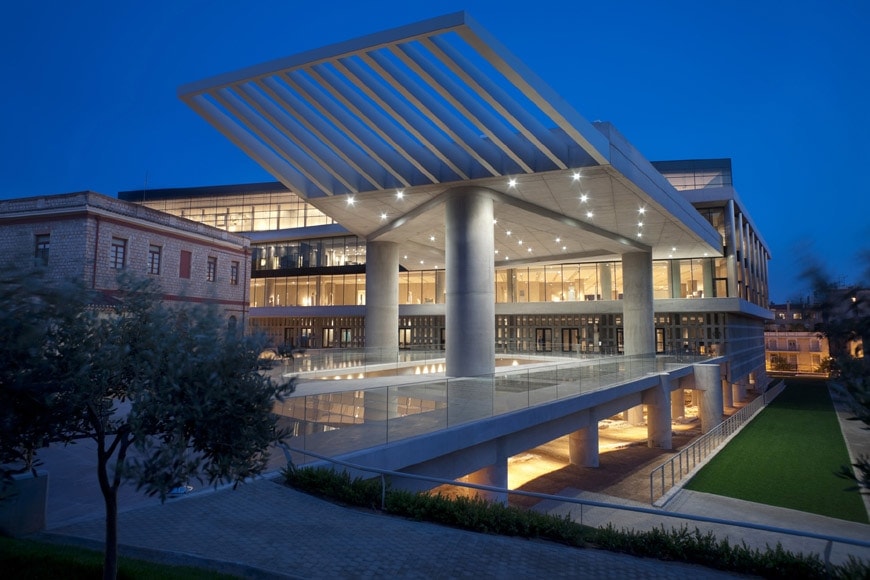
The Acropolis Museum (Greek: Μουσείο Ακρόπολης) in Athens is one of the world’s most important archaeological museums, with a collection spanning over 1,500 years and a stunning architecture designed by Swiss-American architect Bernard Tschumi.
Above: the museum’s main entrance at sunset © Acropolis Museum. Photo Nikos Daniilidis.
History and architecture, the project by Bernard Tschumi
The long history of Athens’ Acropolis Museum begins in 1863 when, 30 years after the last Turkish garrison had left Athens, the local authorities decided to build a small museum near the archaeological remains on the Acropolis hill.
Thereafter, many “grandiose” museums were imagined for the Acropolis but, besides a minor extension of the existing building, none was built.
Finally, in 2000, an international competition for the design of a new, ambitious, Acropolis museum was organized. This time, the winning proposal, developed by New York-based Swiss architect Bernard Tschumi together with the local architectural office of Michael Photiadis, was built and the new museum opened in 2007, eventually providing Athens with a long-awaited venue dedicated to one of the most renowned archaeological sites in the world.
Close view of the museum’s building, © Acropolis Museum. Photo Nikos Daniilidis
One of the issues the architects had to cope with, and one of the reasons for the long process of building a museum in that place, was the presence of on-site archaeological excavations. Although the museum is not located on the top of the Acropolis, on its southeastern bottom boundary, an important settlement dating from the Bronze Age to Early Christianity had been discovered in the Makryianni area, the site of the planned museum.
The need to properly incorporate such historical excavations into the project deeply conditioned, but also inspired, the design by Tschumi and his team.
The archaeological excavations: the journey begins
The museum building consists of three main levels and a mezzanine; the modern construction “floats” over the on-site excavation, supported by reinforced concrete pillars carefully placed to not interfere with the remains; the archaeological site can be somewhat considered the real basement of the new building.
The excavations are currently not publicly accessible; yet, they can be partially seen by the visitors through a sequence of horizontal windows, cut into the entry-level floor slab; it is planned to make them fully accessible by the public shortly.
The entrance level accommodates the lobby, temporary exhibition spaces, visitor services, and an auditorium. The visual relationship with the excavations makes this level the first leg of a chronologically arranged historical itinerary that Tschumi carefully planned when designing the architecture of the museum.
Nike statues from the Acropolis, Athens © Acropolis Museum. Photo Nikos Daniilidis
The Caryatids © Acropolis Museum. Photo Nikos Daniilidis
Permanent exhibition: a circular journey through space and time
The Acropolis Museum houses an extraordinary collection of sculptures, dating from Archaic Greece to Roman times and spanning over fifteen centuries, arranged into five chronological sections.
The permanent exhibition of the museum features artifacts from the Hekatompedon (the earliest building on the hill), the Propylaia, the temple of Athena Nike, the Erechtheion, the Sanctuary of Artemis Brauronia, and, of course, the Parthenon (the temple of Athena Parthenos).
Through a large glass ramp, overlooking the underlying excavations and bordered by artifacts found on the Acropolis slopes, the visitors reach a double-height level where the first gallery, dedicated to the “archaic” period of Greek art, presents archaeological exhibits, dating from the Mycenaean Period to the Geometric and Archaic ages, which illustrate the origins of the Acropolis as a religious center.
Afterward, through a staircase, the visiting path goes on up to the top level of the museum, which houses the Parthenon Gallery and whose footprint is rotated accordingly to the alignment of the Parthenon, so as to present the marbles on view with the same orientation they originally had in the temple.
The Archaic Gallery © Acropolis Museum. Photo Nikos Daniilidis
The famous frieze of the Parthenon is exhibited in the heart of the gallery; the frieze is partly made of original pieces and partly made of copies of the artifacts currently in London. The frieze is arranged around a rectangular core, which has the same size and proportions as the Parthenon’s cella that they once adorned.
Through large windows, the artworks are put in direct visual relationship with the Acropolis and the Parthenon nearby.
From the museum’s upper level, the route continues, progressing in time, and descends to the level underneath, where pieces dating from the Classic age to the Roman period are displayed, eventually returning to the entrance level, thus closing the exhibition’s circular itinerary across space and time.
Top, middle, and bottom: The Parthenon Gallery © Acropolis Museum. Photo Nikos Daniilidis
A daylight-filled building
“ the conditions animating the New Acropolis Museum revolve around natural light· –more than in any other type of museum. (…) The new exhibition spaces could be described as a museum of ambient natural light, concerned with the presentation of sculptural objects within it, whose display changes throughout the course of the day.” (Bernard Tschumi)
The carefully planned adoption of daylighting has been a fundamental component in Tschumi’s design.
Since the Acropolis Museum is, to a large extent, a museum of sculptures, appropriate lighting was required, also considering that many pieces could be viewed from all sides.
The solution conceived by the architects was to provide diffuse ambient lighting through an array of full-height glazed openings running along the entire perimeter of the galleries; the Parthenon Gallery is also enlightened by skylights. To avoid excessive heating from the intense solar radiation, especially in summer, such openings were equipped with highly efficient insulating glass units.
Top: The Hekatompedon. Bottom: Head of Alexander the Great © Acropolis Museum. Photos Nikos Daniilidis
Program of events and activities
The Acropolis Museum organizes temporary exhibitions, guided tours, and educational activities. Along with exhibition spaces, the museum’s wheelchair-accessible building accommodates an Auditorium, a shop, a cafe, and a restaurant with a panoramic terrace overlooking the Acropolis.
How our readers rate this museum (you can vote)
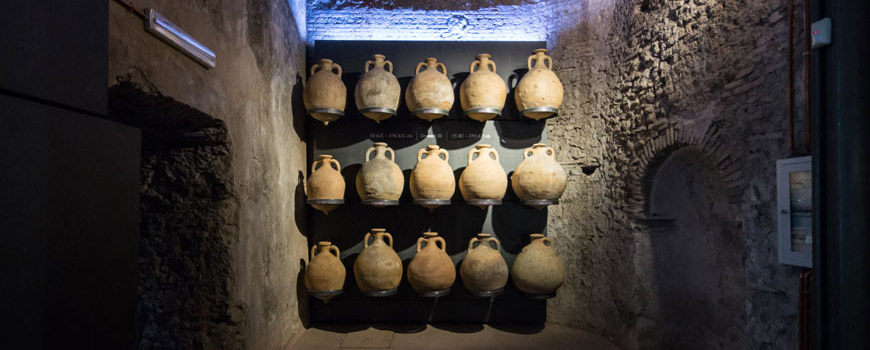
Museums of Archaeology and Archaeological Sites around the World
copyright Inexhibit 2024 - ISSN: 2283-5474

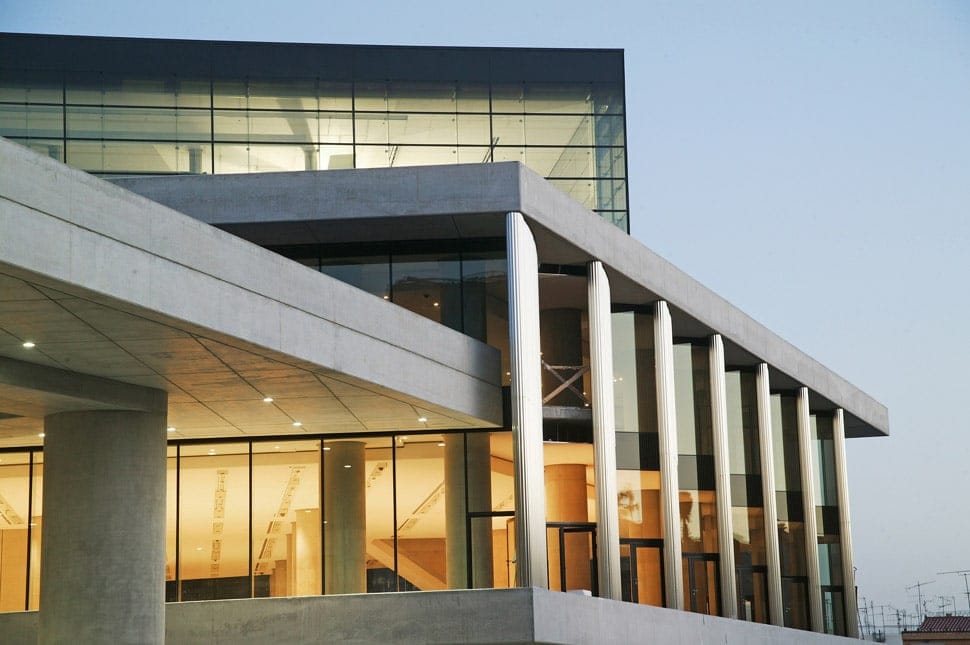
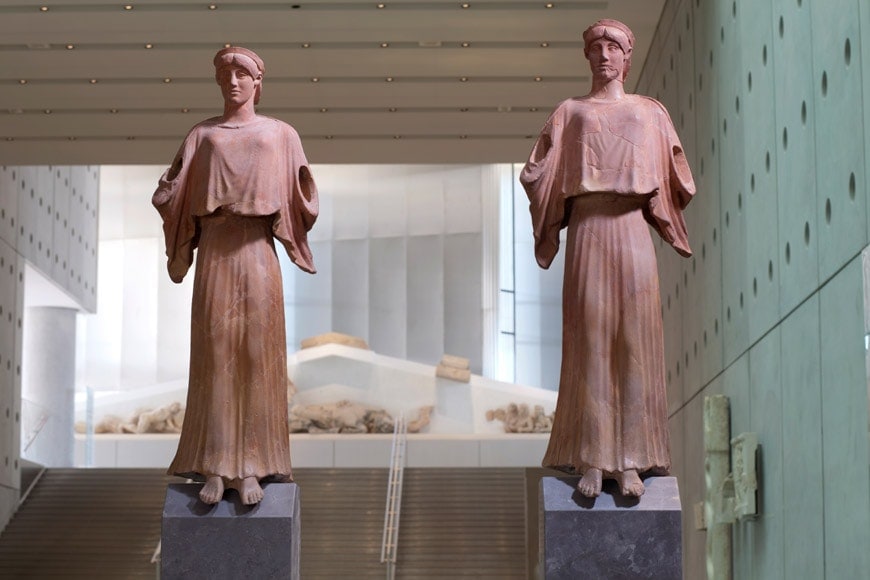
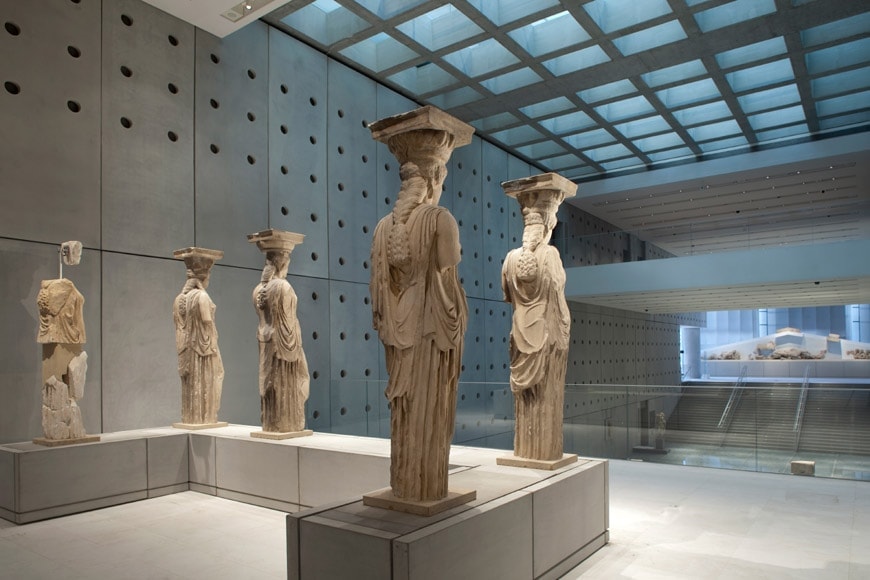

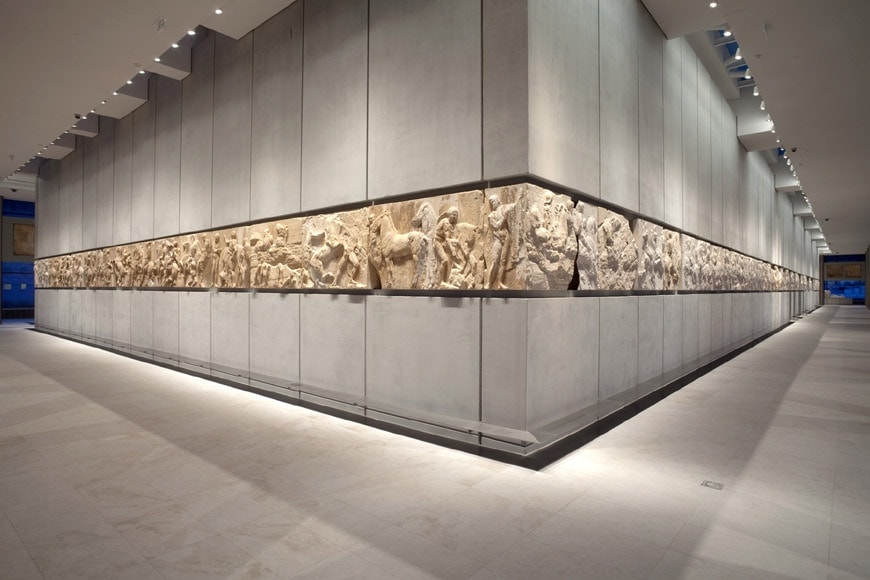
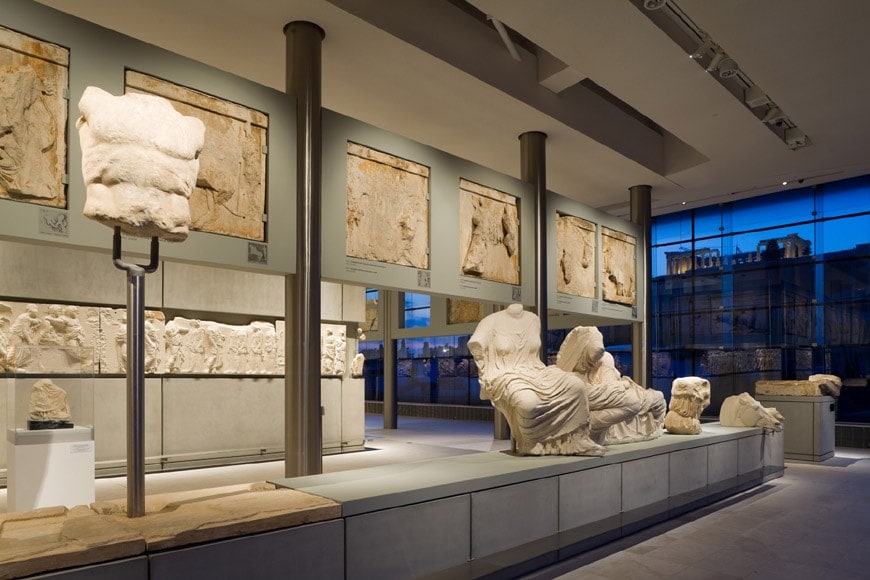
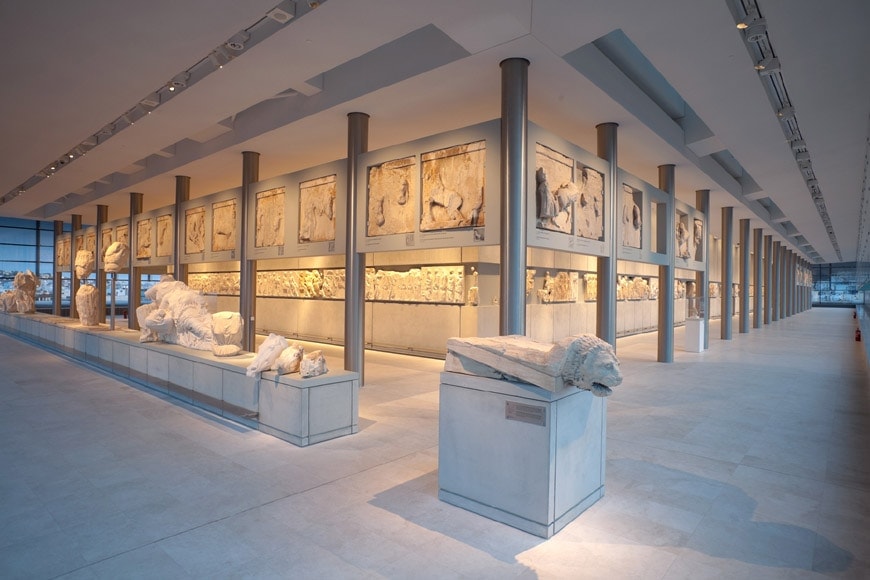
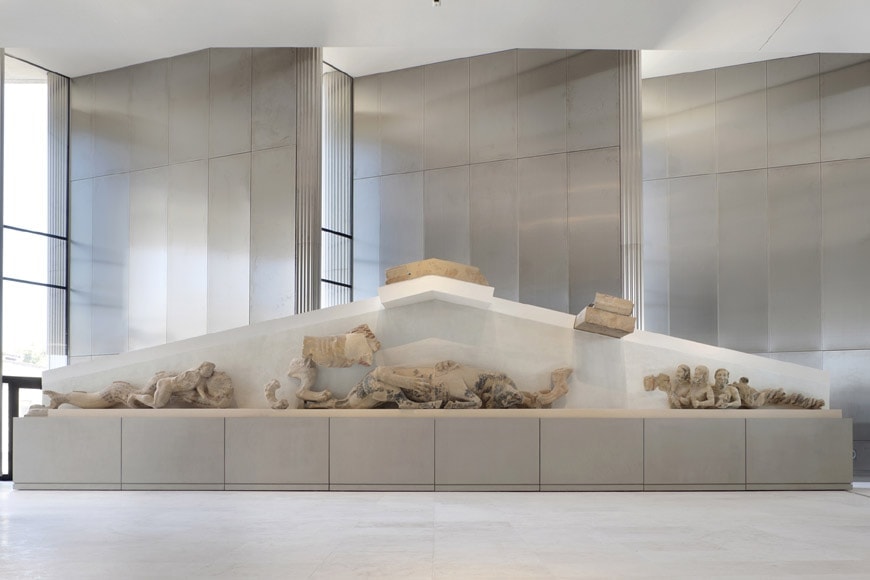
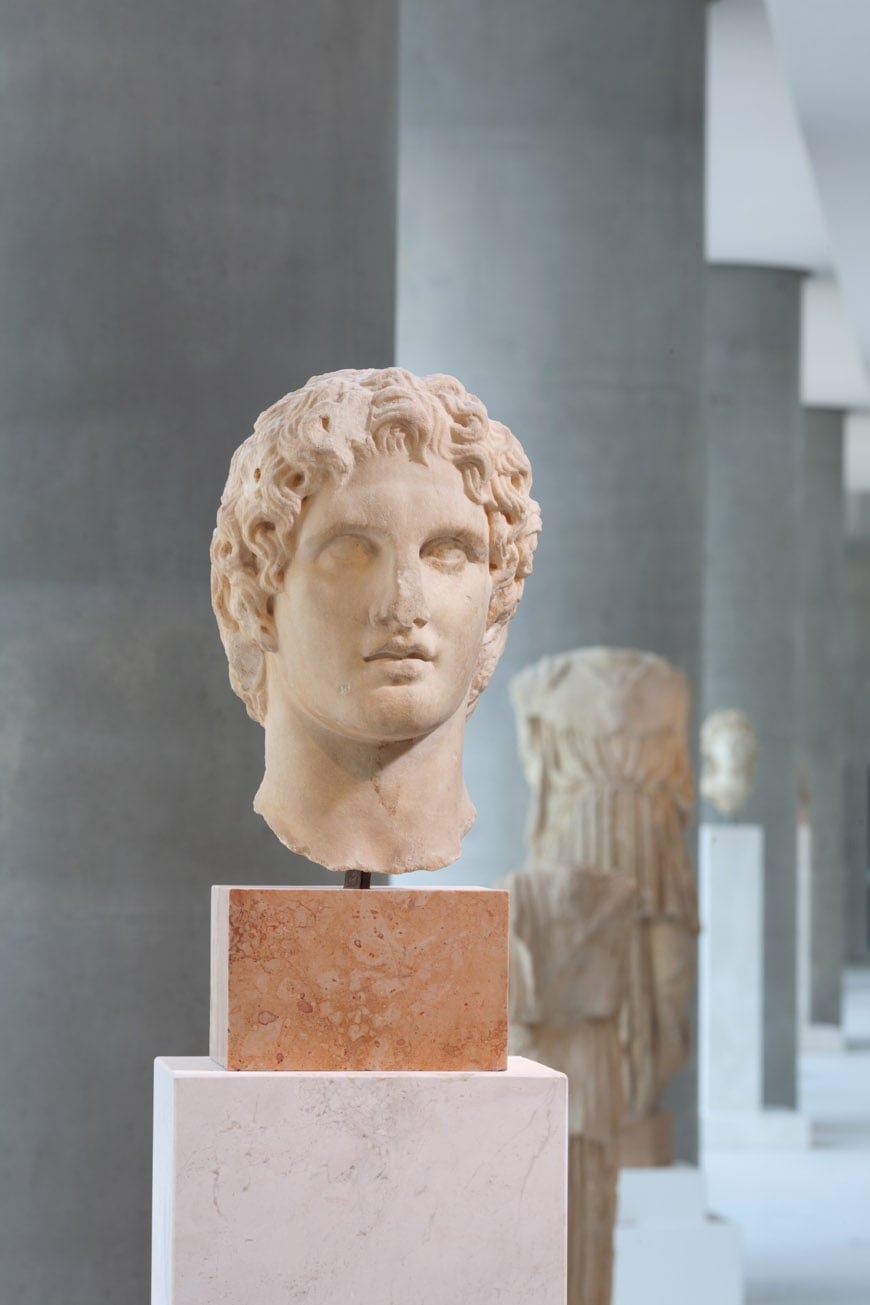

 (12 votes, average: 4.50 out of 5)
(12 votes, average: 4.50 out of 5)